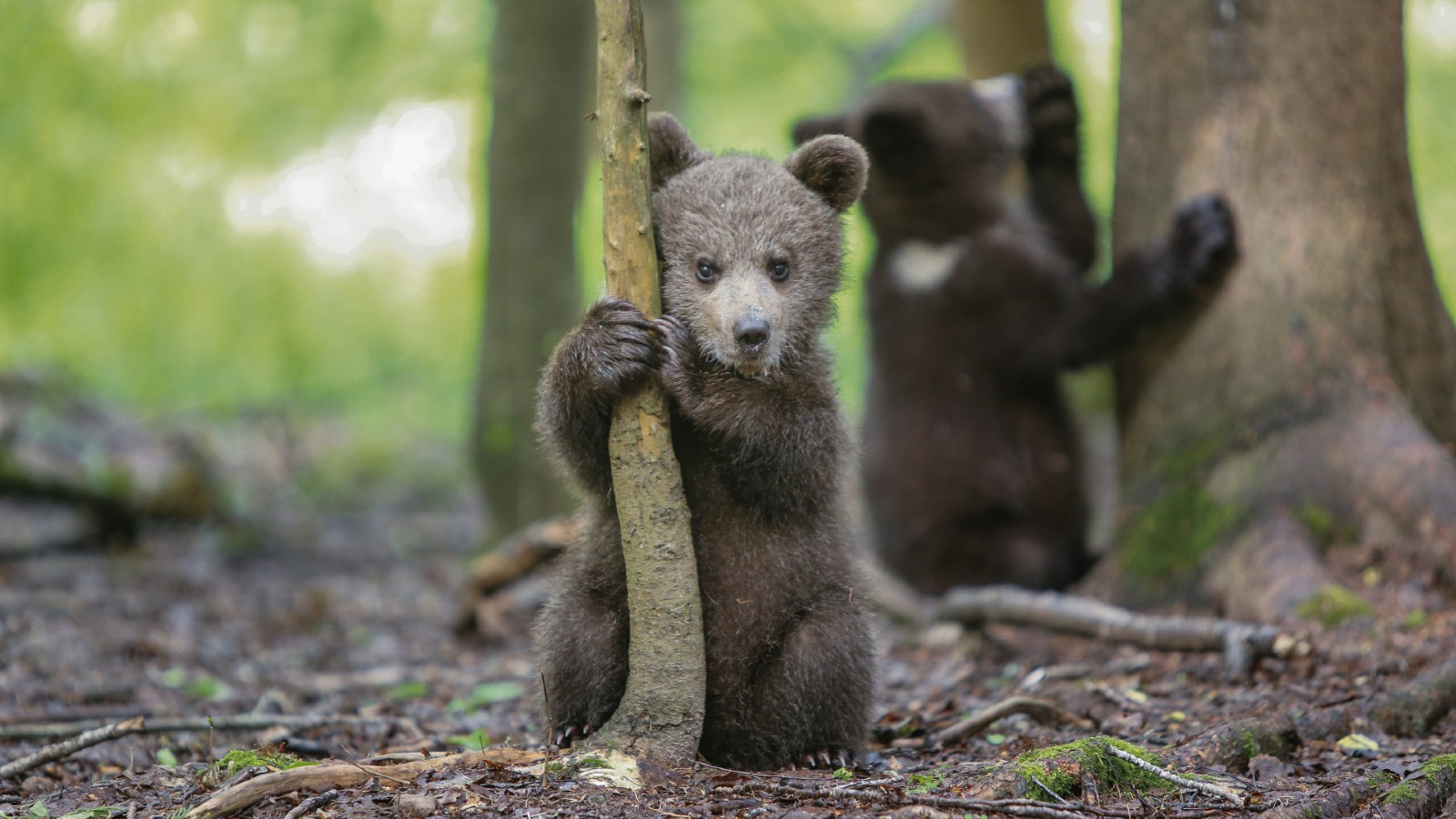Brown bear threats
Worldwide, there’s an estimated 200,000 brown bears living in the wild, and they face serious threats.

HABITAT LOSS
Brown bears live in wooded, mountainous regions. With deforestation, intensive logging and expanding human populations encroaching into their habitats, it is becoming difficult for bears to forage for food, and gain weight needed to survive the winter. Increased noise in the forest can also cause hibernating bears to wake early, or even abandon their cubs in fear.
CLIMATE CHANGE
Rising temperatures can alter bear habitats, food supplies and hibernation cycles. In 2019/20, Russia saw an unseasonably snow-less winter, causing female brown bears to emerge from their dens and give birth earlier than normal, at a time when food was in short supply. This can cause increased cub mortality because if mothers cannot find adequate nutrition they are unable to feed their cubs Access to a proper diet can also affect the birth rate. Although bears mate in early summer, it is not until the winter that the embryo develops. Cubs (often twins) are born eight weeks later, weighing less than a kilogram. If the mother does not gain enough weight before hibernation, the embryo will not develop.
HUNTING AND ILLEGAL TRADE
Bears have been hunted since prehistoric times for their meat and fur, and the illegal poaching of bears and trade in their body parts continues today. Brown bears are prized trophies amongst hunters, due to their size and ferocity. A small number of legal hunts take place in Russia each year, with tourists paying up to £7,745 ($10,000) for a kill. Bear bile and gall bladders are also traded and used in some traditional Asian medicines. Born Free is opposed to the killing of any animal for sport or pleasure, and strongly refutes claims by trophy hunting proponents that their activities support conservation or local communities.
HUMAN CONFLICT
As a result of expanding human communities and the associated conversion of bear habitat for other land uses, like farming, brown bears living close to towns and villages can be regarded as pests because of their attraction to human food. Their size and unpredictability can also make them dangerous to people if they can stray into built-up areas, putting them at risk of being killed by landowners and the authorities.
